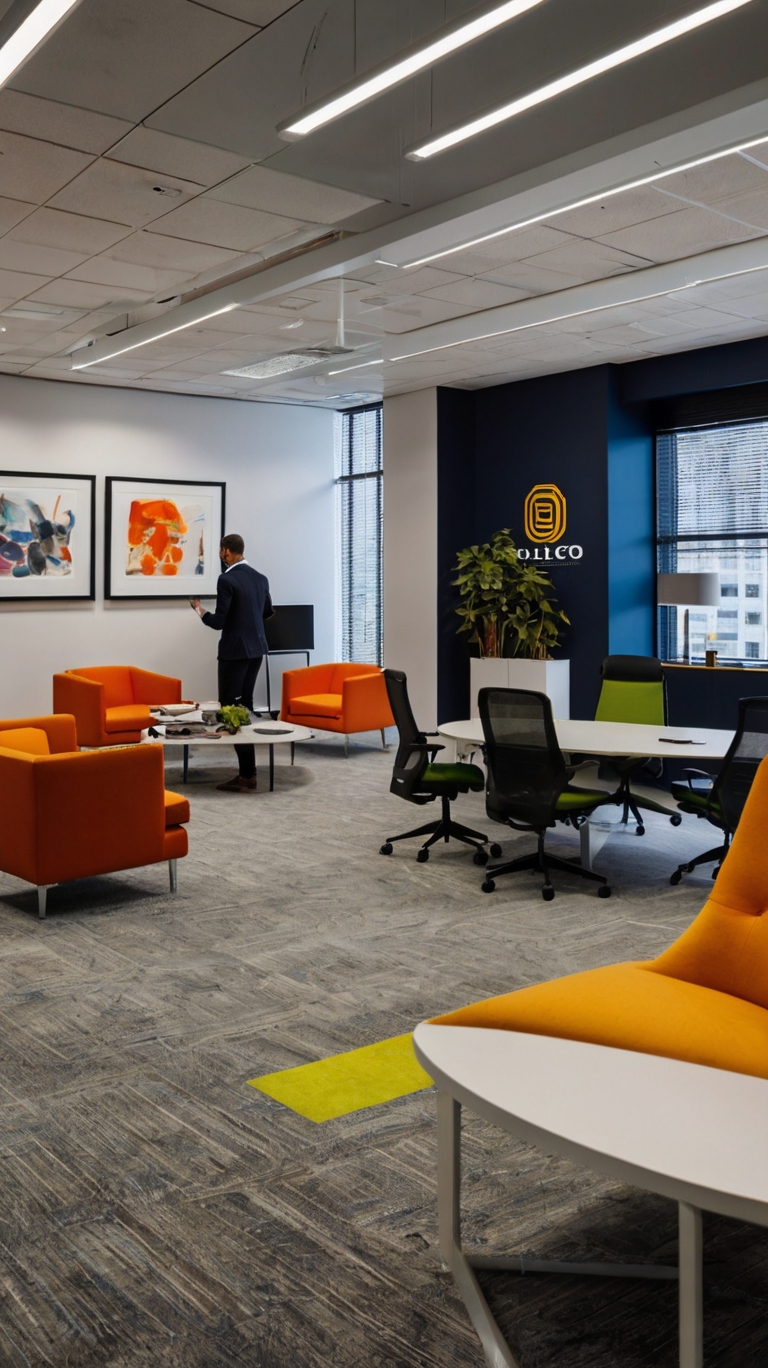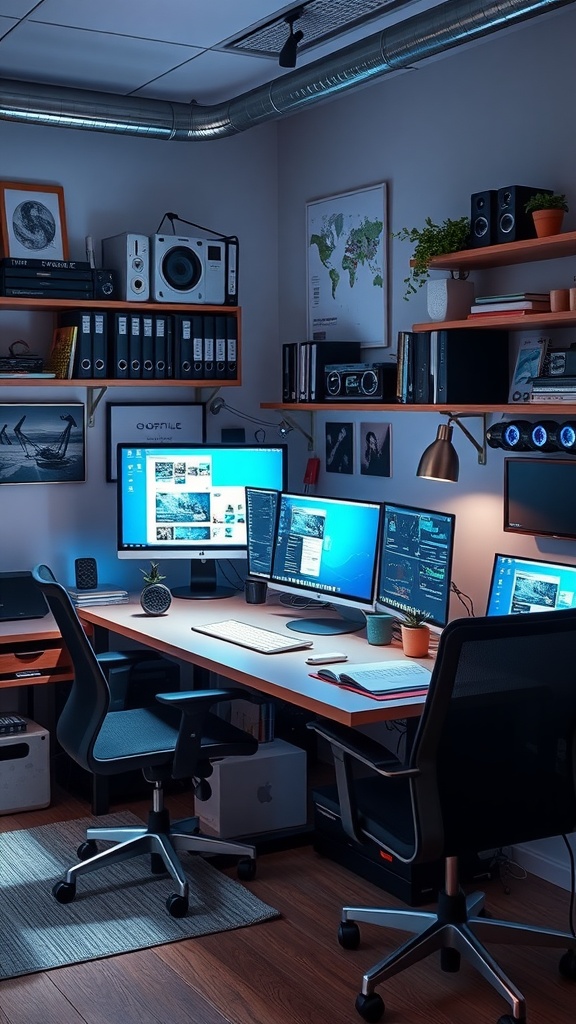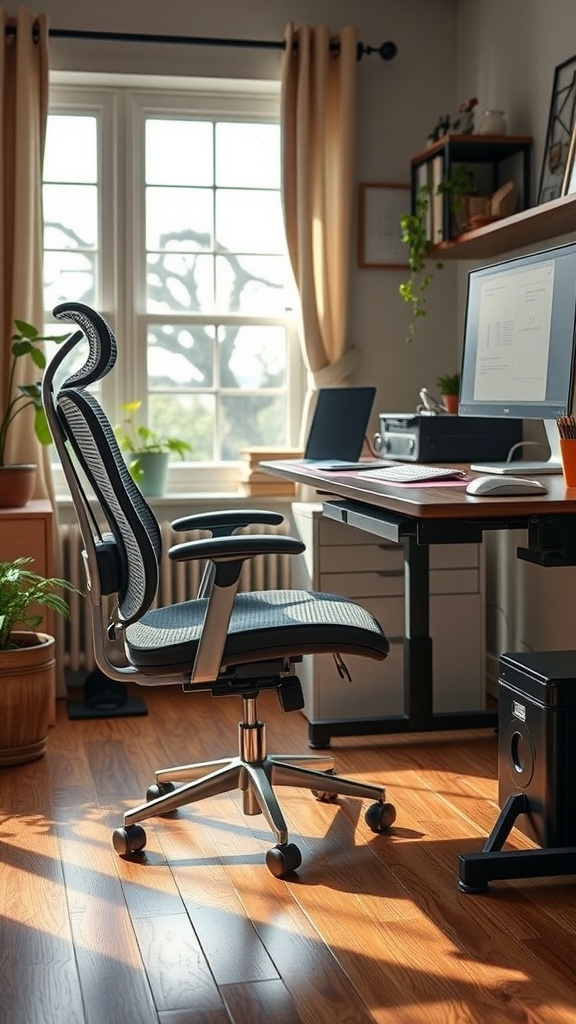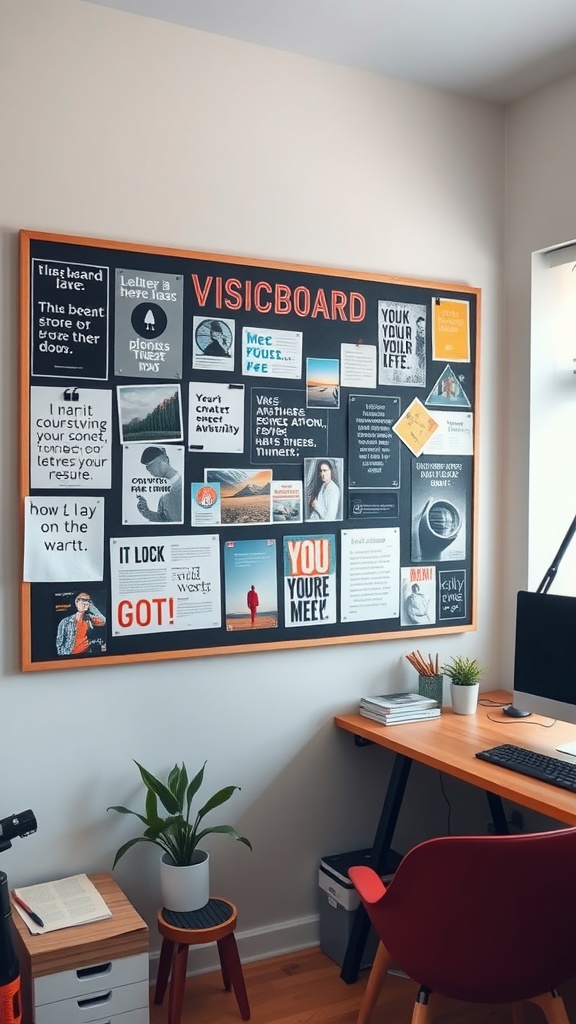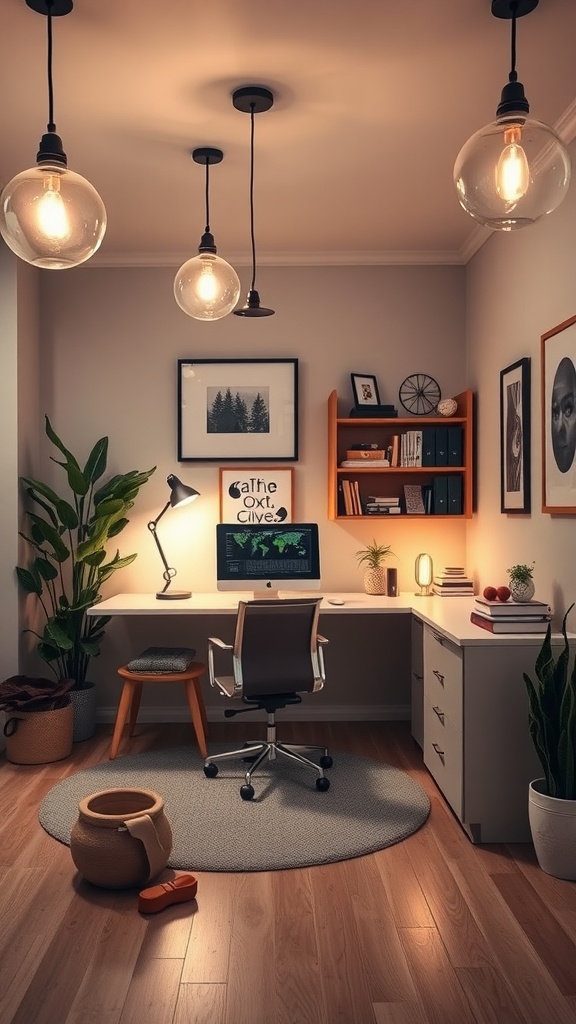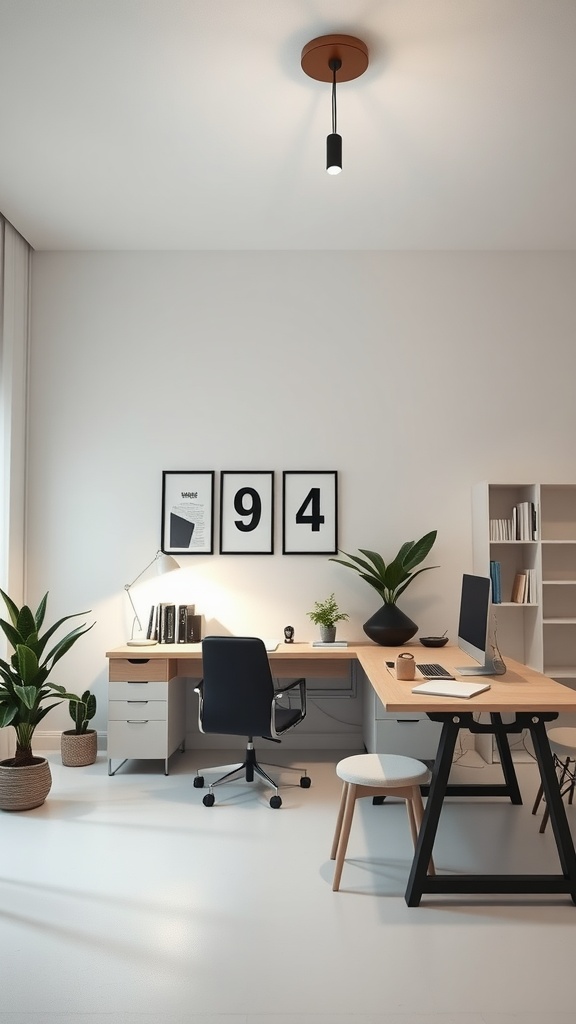15 Modern Office Design Ideas to Enhance Productivity and Well-Being
Modern office design is more than just aesthetics; it’s about creating a workspace that fosters productivity, creativity, and well-being.
As the nature of work continues to evolve, so too do the design principles that guide office spaces. This blog post explores 15 innovative office design ideas that can transform your workspace into a hub of efficiency and inspiration.
1. Biophilic Design: Bringing Nature Indoors
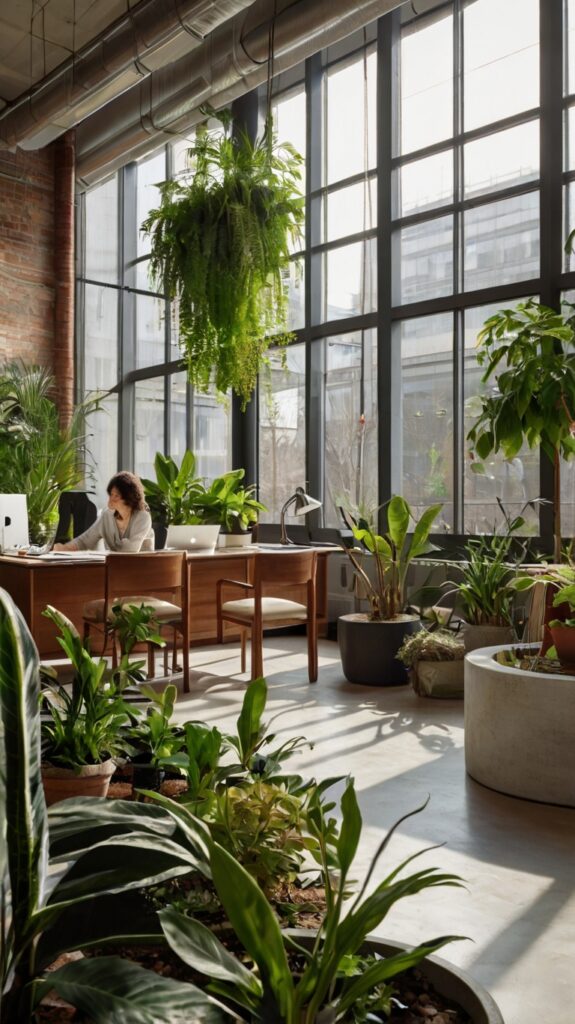
Biophilic design focuses on integrating natural elements into the office environment. This can include living plants, natural light, and natural materials.
Studies have shown that biophilic design can reduce stress, enhance creativity, and improve overall well-being. Incorporating elements like indoor gardens, water features, and large windows can create a more pleasant and productive workspace.
Also Read: 45 Creative Small Office Interior Design Ideas to Maximize Space
2. Flexible Workspaces: Adapting to Changing Needs
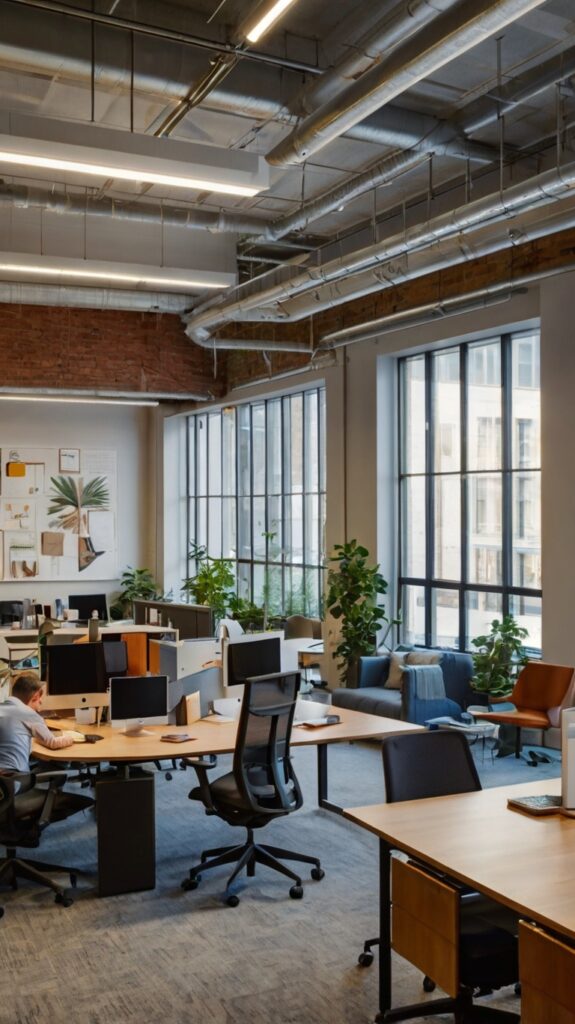
Flexible workspaces are designed to accommodate various work styles and activities. This can include open-plan areas, private pods, and collaborative spaces.
By offering a range of options, employees can choose the environment that best suits their tasks and preferences. Flexible workspaces promote adaptability and can help reduce distractions.
3. Ergonomic Furniture: Prioritizing Physical Health
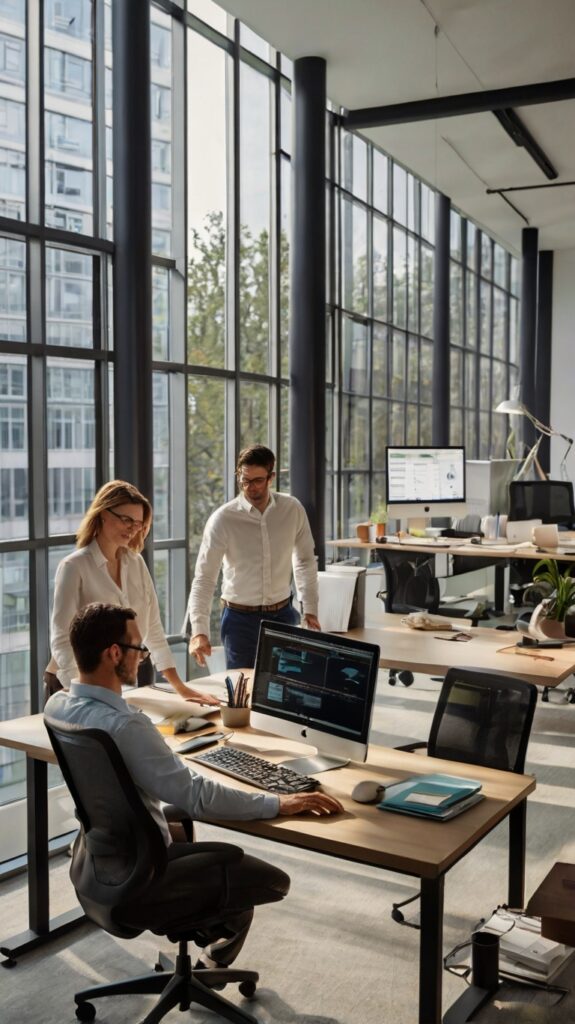
Ergonomic furniture is essential for maintaining the physical health of employees. This includes adjustable chairs, standing desks, and supportive keyboards.
Ergonomic design reduces the risk of strain and injury, leading to increased comfort and productivity. Investing in high-quality ergonomic furniture shows a commitment to employee well-being.
4. Smart Lighting: Enhancing Mood and Productivity
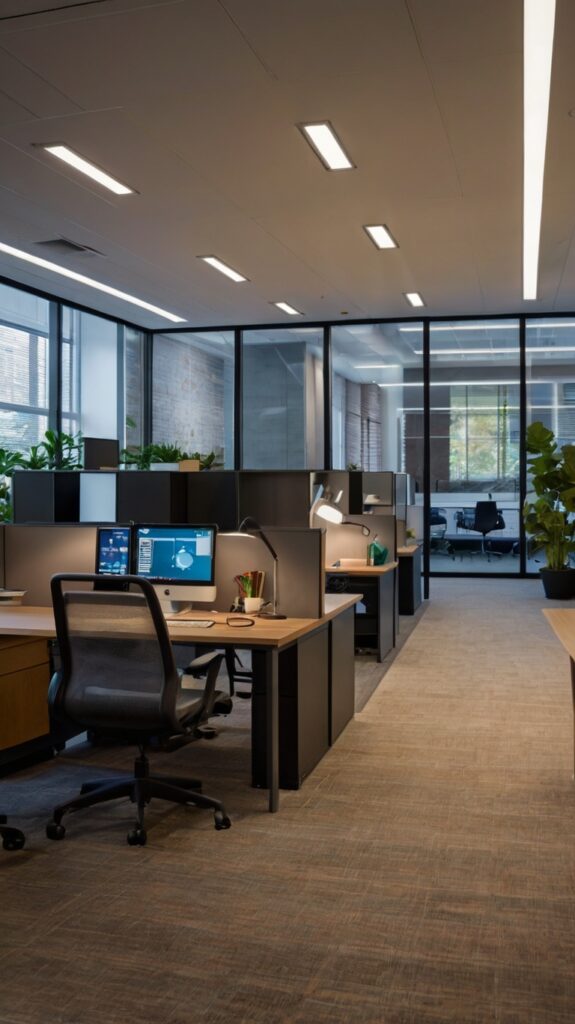
Smart lighting systems can be programmed to adjust the intensity and color temperature of the light throughout the day. This mimics natural daylight and can help regulate circadian rhythms.
Proper lighting can reduce eye strain, improve mood, and enhance cognitive function. Consider using dimmable lights and natural light sensors to create a dynamic and responsive lighting environment.
Also Read: 18 Inspiring Western Office Decor Ideas to Transform Your Workspace
5. Acoustic Design: Minimizing Noise Distractions
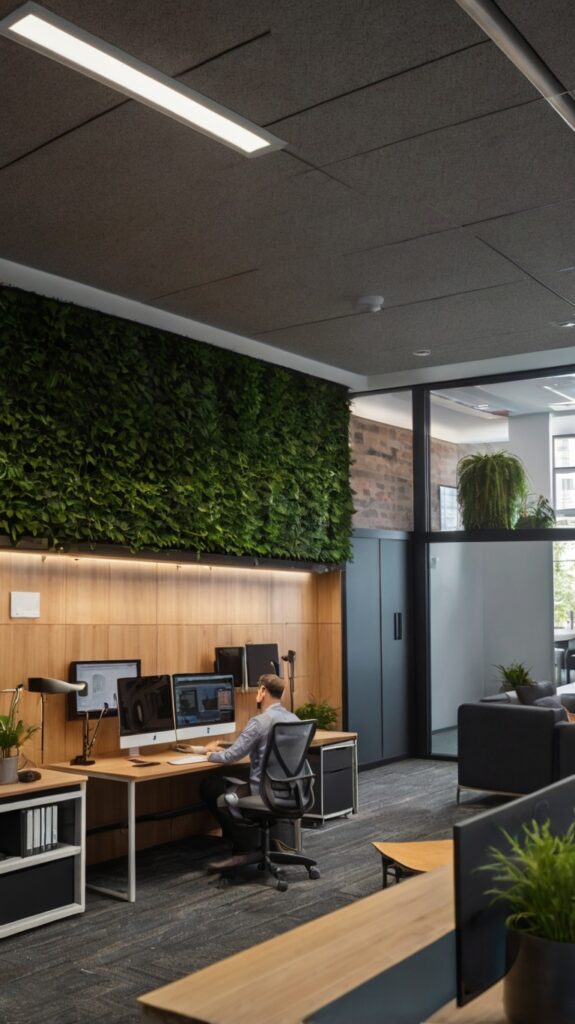
Noise can be a significant distraction in the office. Acoustic design involves using materials and techniques to absorb and reduce sound.
This can include soundproofing walls, installing acoustic panels, and using noise-cancelling headphones. By creating a quieter environment, employees can focus better and communicate more effectively.
6. Collaborative Spaces: Fostering Teamwork
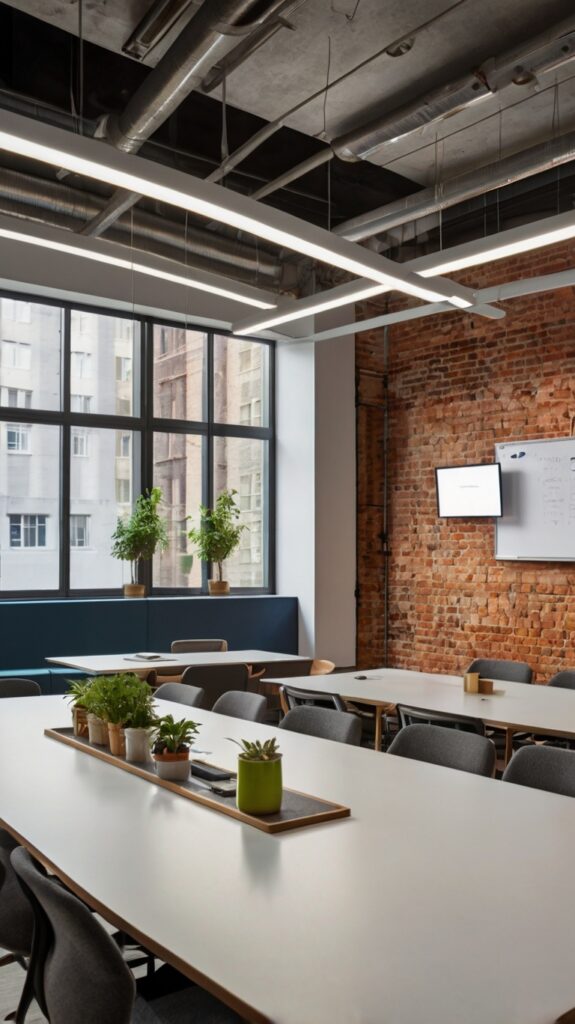
Collaborative spaces are designed to encourage teamwork and idea sharing. These areas can include meeting rooms, break rooms, and informal gathering spaces.
Equipped with whiteboards, comfortable seating, and technology for presentations, collaborative spaces can enhance communication and creativity. Regular team-building activities can also be held in these areas to strengthen team bonds.
7. Digital Integration: Embracing Technology
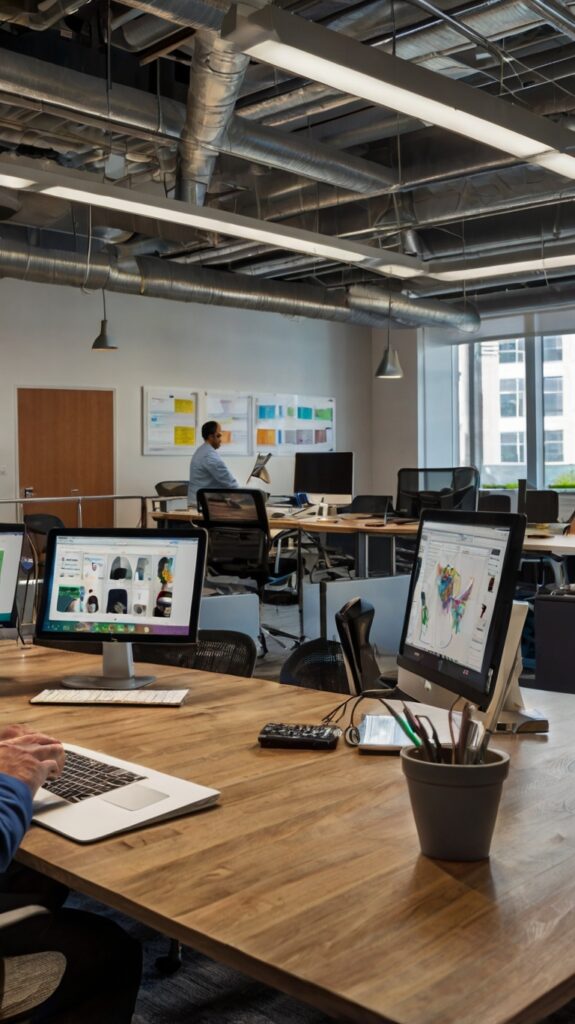
Modern office design should seamlessly integrate technology to enhance productivity and efficiency. This can include high-speed internet, wireless charging stations, and smart devices.
Digital tools like video conferencing, project management software, and cloud storage can facilitate remote work and collaboration. Ensuring that technology is user-friendly and accessible is crucial for a smooth workflow.
8. Color Psychology: Using Color to Influence Mood
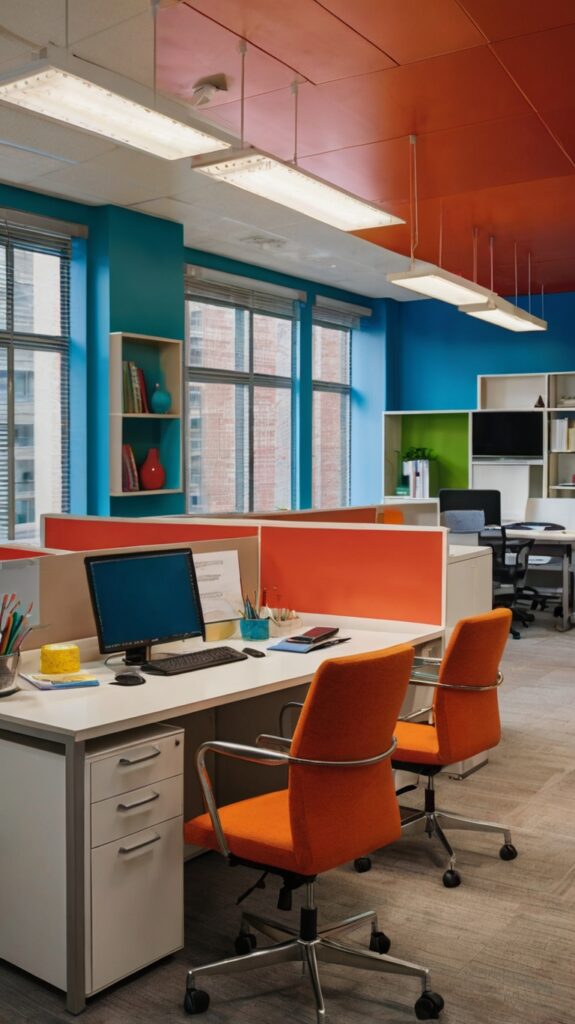
Color can have a significant impact on mood and productivity. Warm colors like red and orange can stimulate energy and creativity, while cool colors like blue and green can promote calm and focus.
Using a thoughtful color palette can help create a more harmonious and productive environment. Consider using color strategically in different areas of the office to achieve the desired effects.
9. Sustainable Design: Reducing Environmental Impact
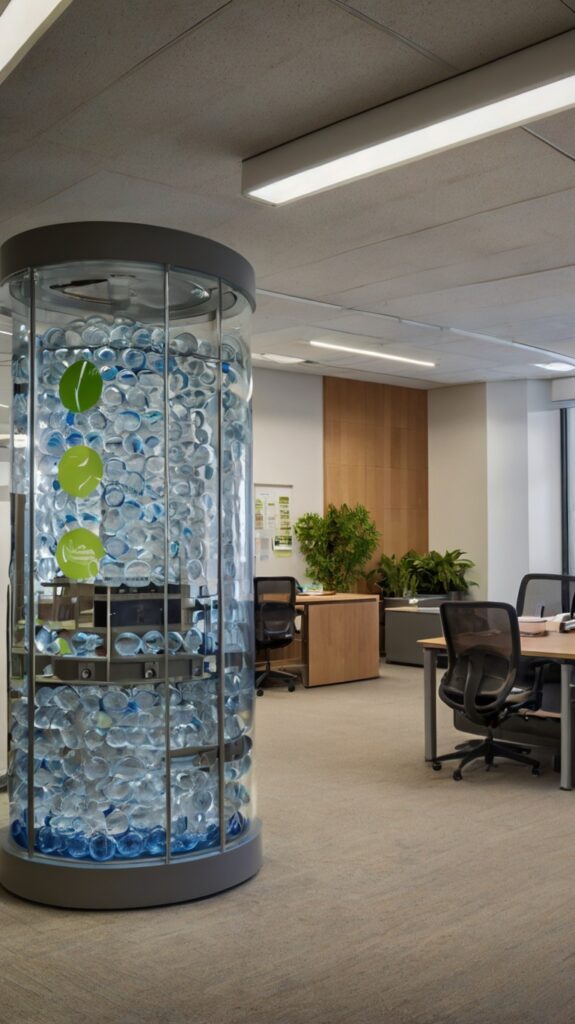
Sustainable design focuses on minimizing the environmental impact of the office. This can include using eco-friendly materials, energy-efficient lighting, and water-saving fixtures.
Implementing sustainable practices not only benefits the environment but can also reduce operational costs. Certifications like LEED (Leadership in Energy and Environmental Design) can help validate your commitment to sustainability.
Also Read: 19 Inspiring Work Desk Decor Ideas for Your Office
10. Art and Decor: Adding Personal Touches
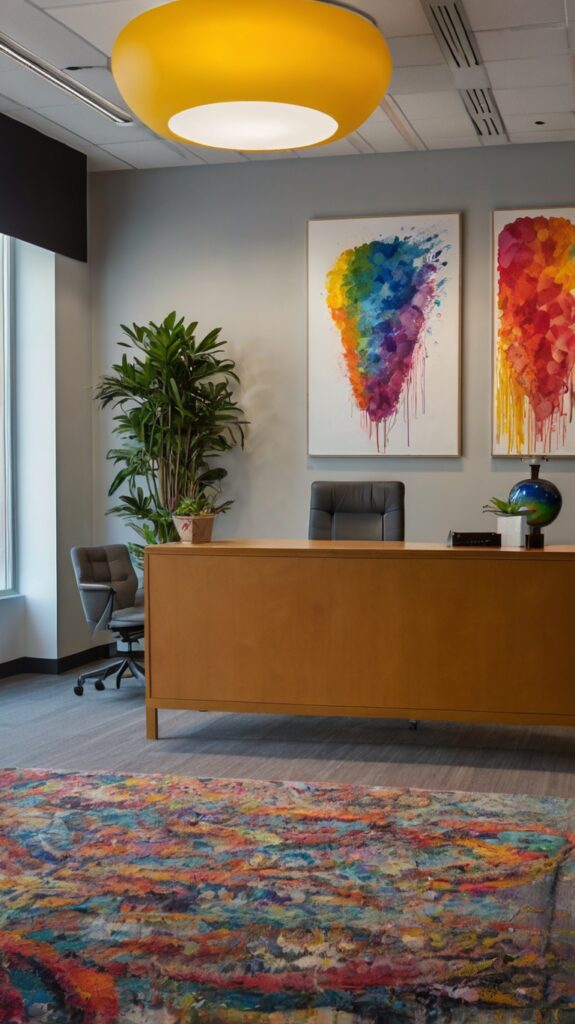
Art and decor can add a personal and creative touch to the office environment. This can include paintings, sculptures, and decorative elements that reflect the company’s culture and values.
Art can inspire creativity and provide a sense of identity and pride. Consider involving employees in the selection process to ensure that the decor resonates with the team.
11. Breakout Spaces: Encouraging Relaxation
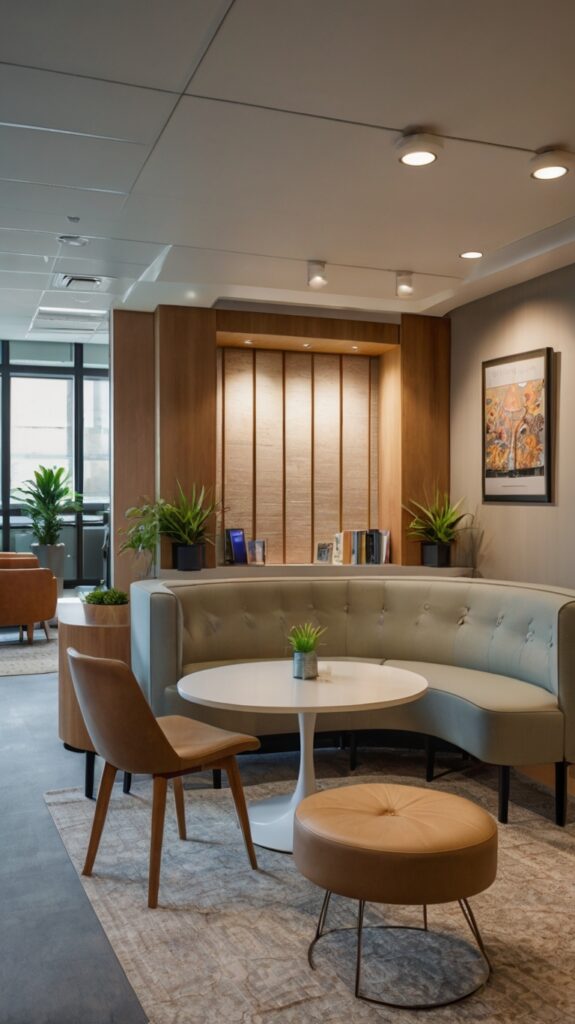
Breakout spaces are designed for employees to take a break and recharge. These areas can include comfortable seating, games, and refreshment stations.
By providing a space for relaxation, employees can return to their tasks with renewed energy and focus. Breakout spaces can also serve as informal meeting areas, fostering a more relaxed and collaborative atmosphere.
12. Health and Wellness Facilities: Supporting Employee Well-Being
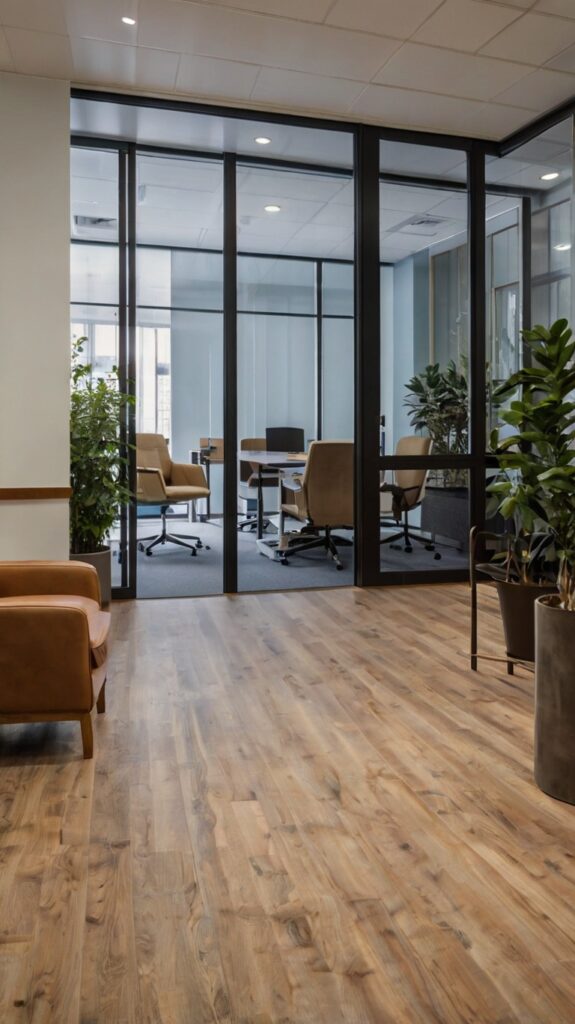
Health and wellness facilities can significantly improve employee well-being. This can include on-site gyms, meditation rooms, and health clinics.
By providing access to these facilities, employees can prioritize their physical and mental health. Regular wellness programs and activities can also be organized to promote a healthy lifestyle.
13. Branding and Identity: Reflecting Company Culture
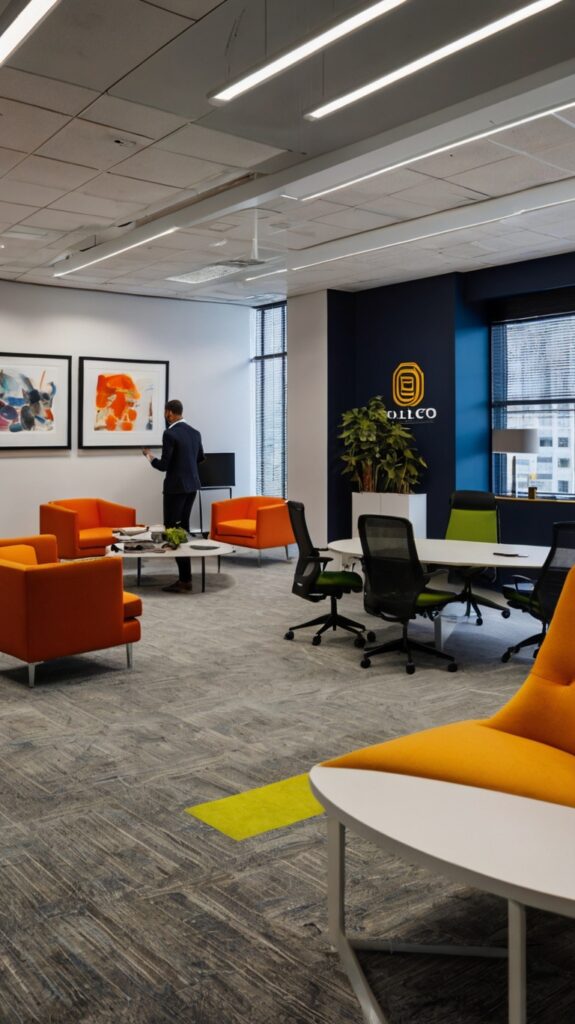
The office design should reflect the company’s brand and identity. This can be achieved through the use of logos, colors, and design elements that align with the company’s values.
A strong brand presence can enhance employee engagement and attract clients and partners. Consistency in branding across all areas of the office is key to creating a cohesive and professional environment.
14. Modular Design: Flexibility and Scalability
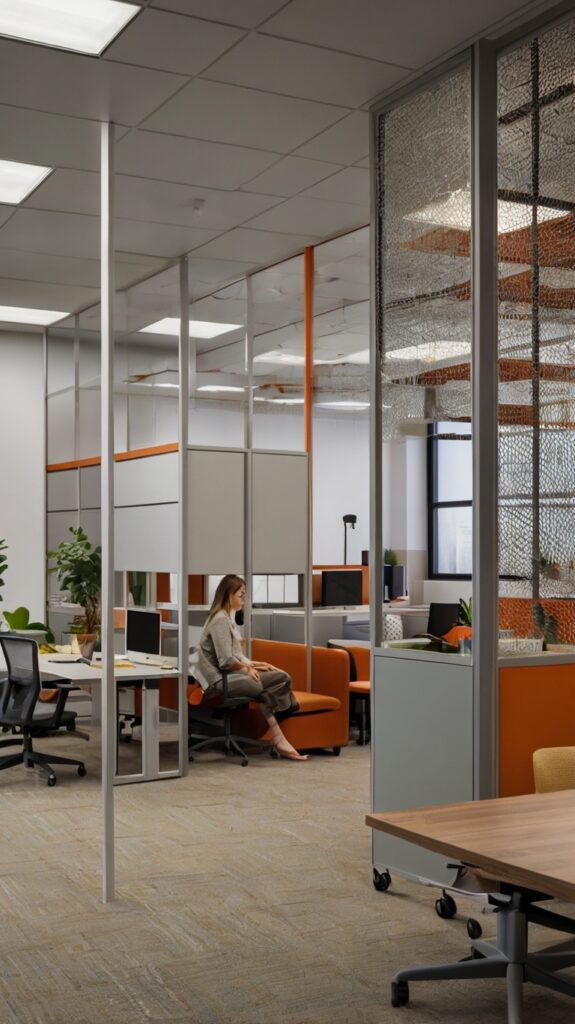
Modular design involves using flexible and scalable elements that can be easily reconfigured. This can include modular furniture, movable partitions, and modular storage solutions.
Modular design allows the office to adapt to changing needs and accommodate growth. This flexibility can save time and resources in the long run, making it a cost-effective design approach.
15. Outdoor Spaces: Extending the Workplace

Outdoor spaces can provide a refreshing change of scenery and a connection to nature. This can include rooftop gardens, terraces, and outdoor meeting areas.
Outdoor spaces can be used for team-building activities, informal meetings, and relaxation. By extending the workplace to the outdoors, employees can enjoy fresh air and natural light, which can boost mood and productivity.
Conclusion
Modern office design is a multifaceted approach that considers the physical, emotional, and social needs of employees.
By incorporating these 15 design ideas, you can create a workspace that not only looks great but also enhances productivity, creativity, and well-being.
Whether you’re designing a new office or renovating an existing one, these ideas can serve as a starting point for creating a truly modern and innovative workplace.

